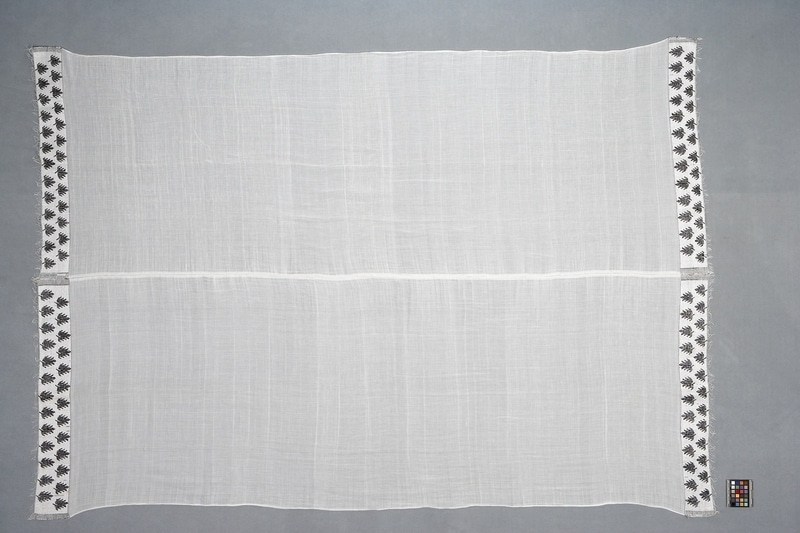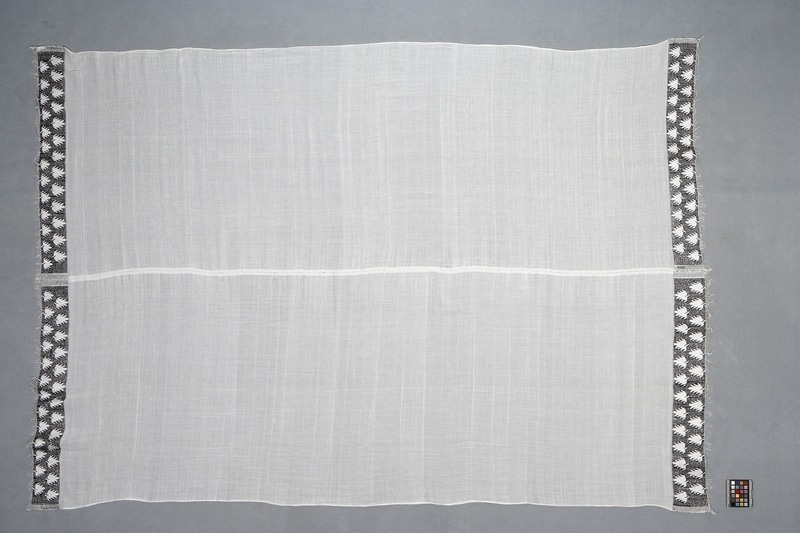Shawl Item Number: Ca36 b from the MOA: University of British Columbia


Description
Matching shawl for cotton dress (Ca36 a). The shawl is white and rectangular, with a black oda tree motif arranged in a staggered double row on both ends.
History Of Use
Shawl, or netela, worn with dress (Ca36 a); hand woven from indigenous cotton. Women spin the cotton and often wear the shawls, men do the weaving. The shawl (netela) border is commonly worn over the left shoulder, but different religious and ethnic groups wear the netela differently. Amongst Ethiopian Orthodox Christians, the netela is worn as everyday wear as well as at church, on public holidays, at weddings and funerals. Muslim Ethiopians wear the netela only at weddings and funerals. Different folding and wrapping techniques indicate which occasion is being observed.
Cultural Context
clothing; national dress
Iconographic Meaning
The embroidery on this netela indicate that it is from central Ethiopia as the oda tree, featured in the embroidery, has significance in Oromo culture.
Specific Techniques
Like other Ethiopian shawls, the netela has historically been woven on a horizontal pit loom, usually by two male weavers at once. The colourful weft borders are known as tibeb.
Item History
- Made in Ethiopia before 1974
- Collected during 1974
- Owned by Lemma Admasu before December 27, 1979
- Received from Lemma Admasu (Seller) and Museum of Anthropology Donations Fund (Funding source) on December 27, 1979
What
- Name
- Shawl
- Identification Number
- Ca36 b
- Type of Item
- shawl
- Material
- dye and cotton fibre
- Manufacturing Technique
- woven, dyed and machine stitched
- Overall
- height 204.0 cm, width 145.5 cm
Who
- Culture
- Oromo ?
- Previous Owner
- Lemma Admasu
- Received from
- Lemma Admasu (Seller) and Museum of Anthropology Donations Fund (Funding source)
Where
- Holding Institution
- MOA: University of British Columbia
- Made in
- Ethiopia
When
- Creation Date
- before 1974
- Collection Date
- during 1974
- Ownership Date
- before December 27, 1979
- Acquisition Date
- on December 27, 1979
Other
- Item Classes
- textiles
- Condition
- good
- Accession Number
- 0587/0004 b